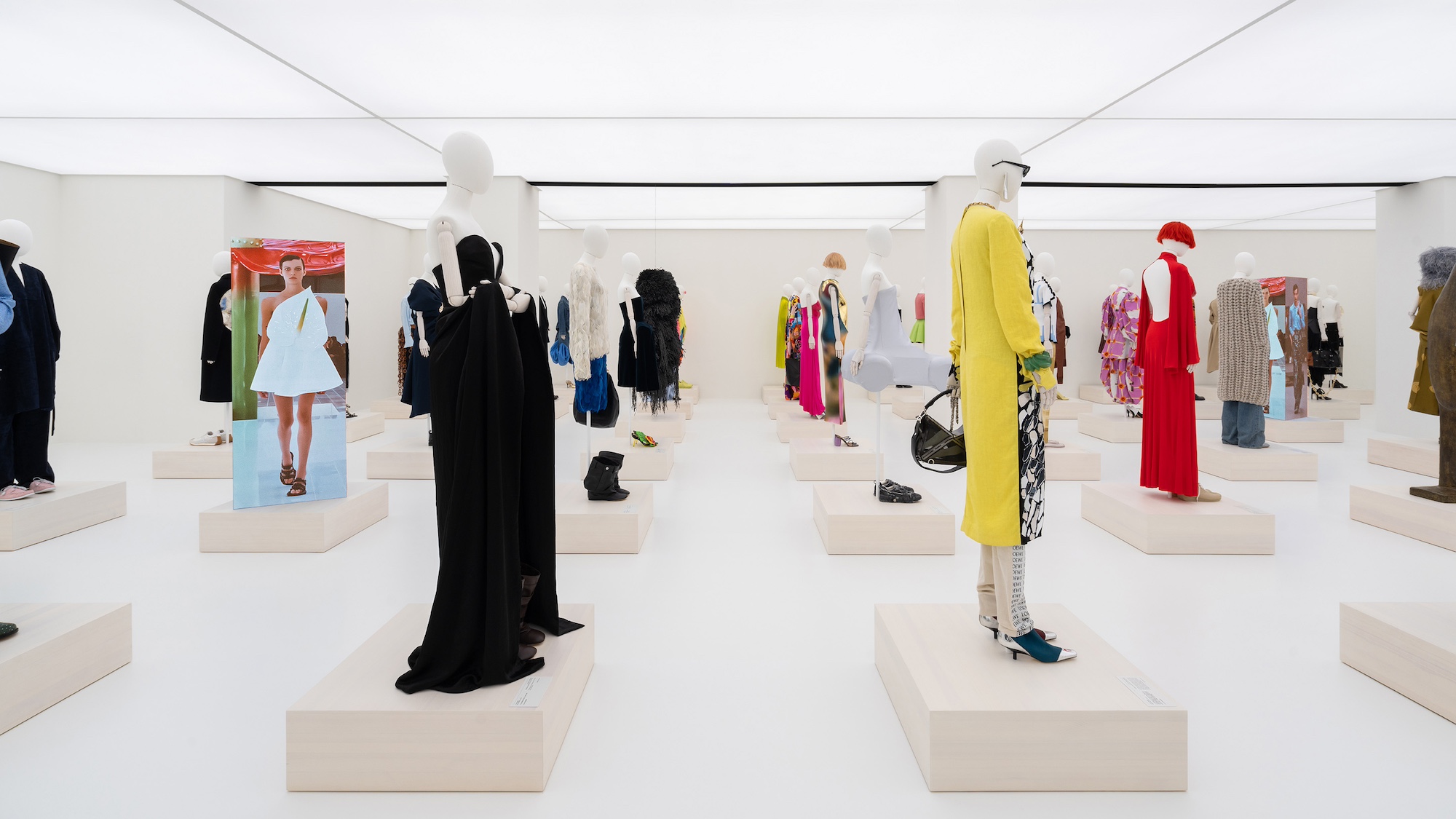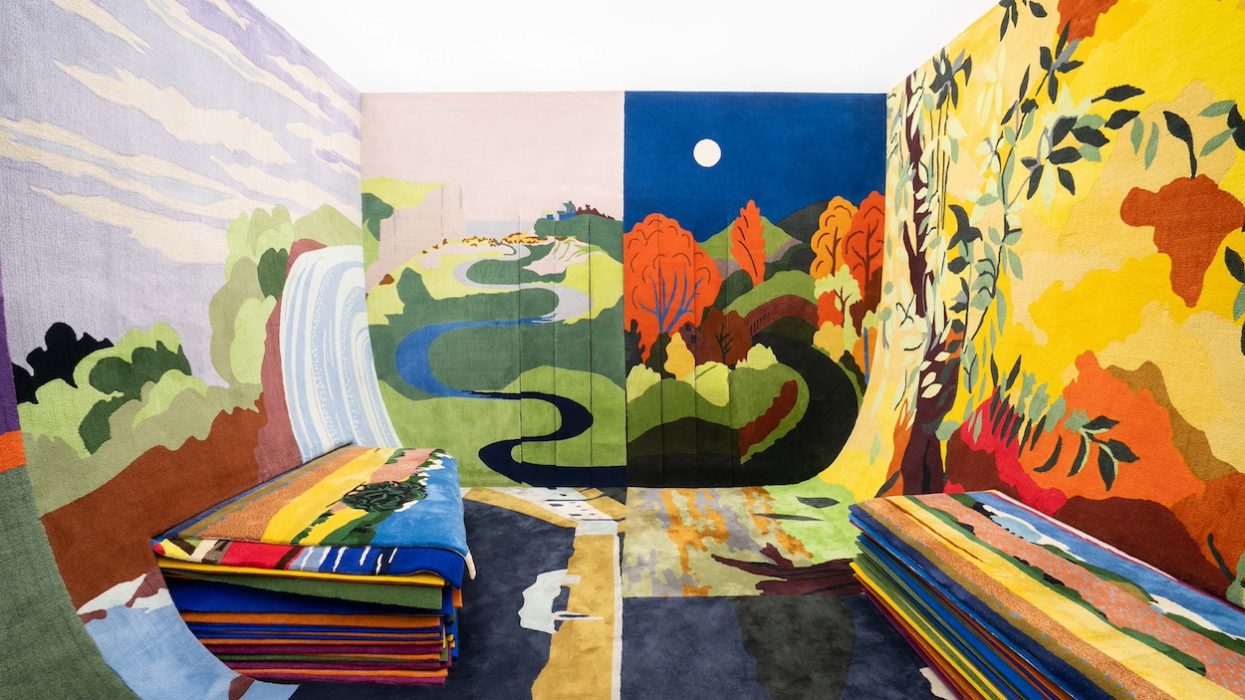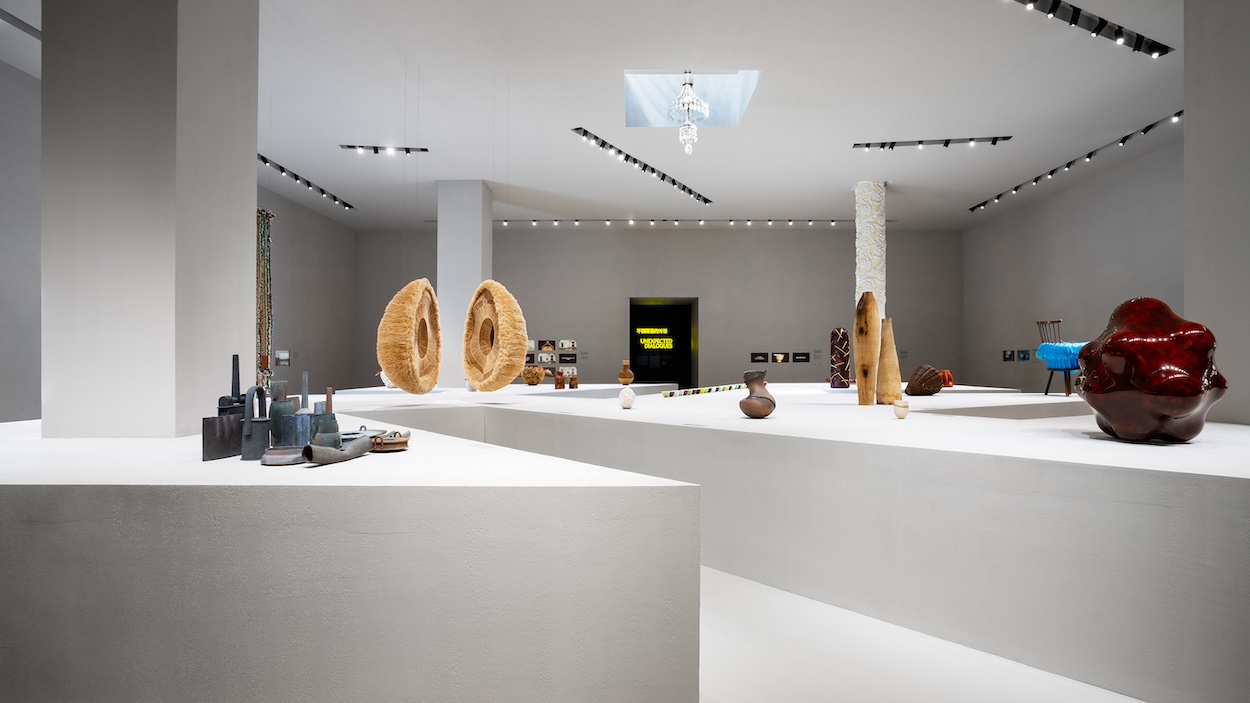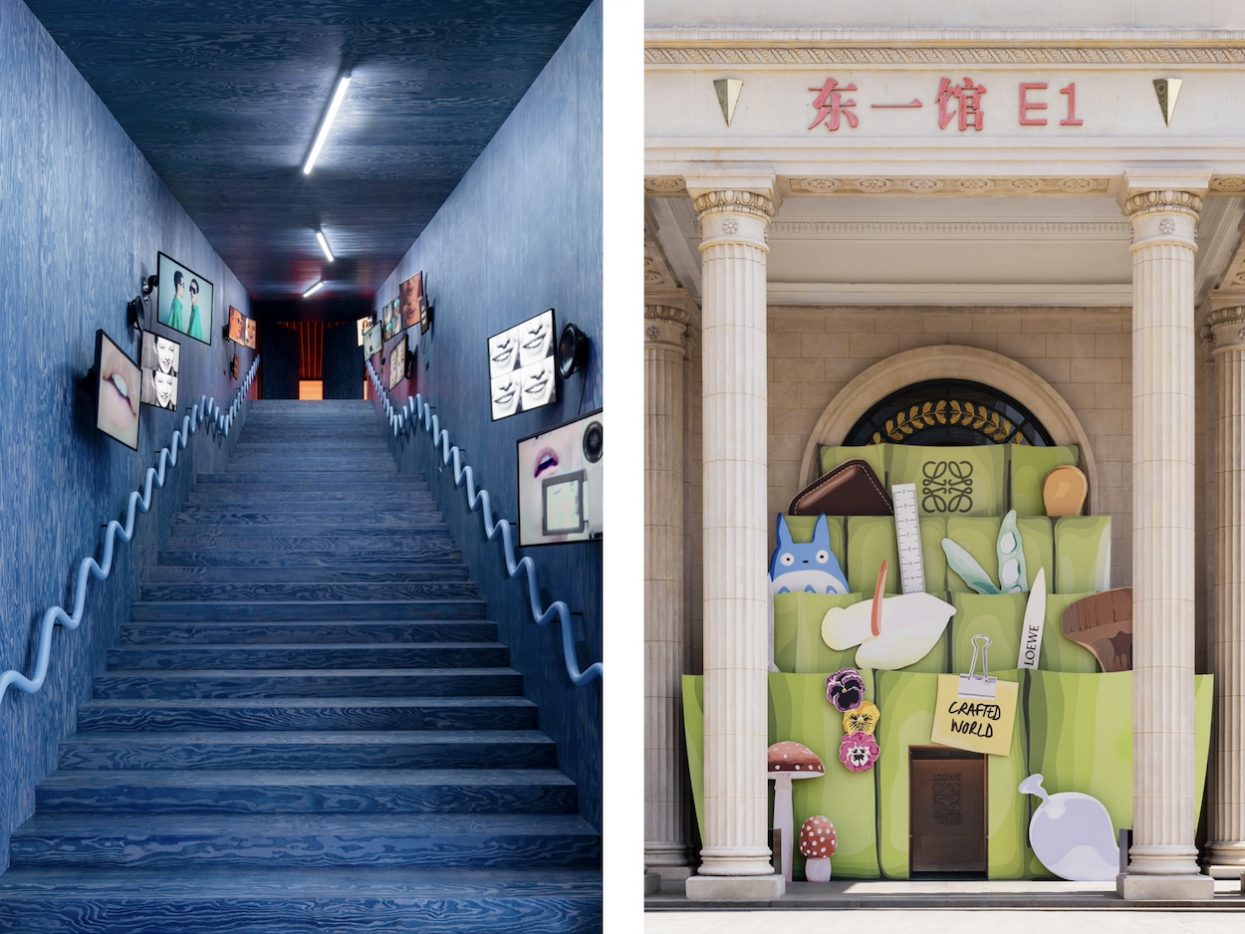When it was formed in 1846, Loewe was favored by the Spanish royal family and renowned for its master leatherwork. LVMH acquired the house in 1996 and recruited luminaries like Narciso Rodriguez and Stuart Vevers to enliven the brand before enlisting Jonathan Anderson. At the time, the prodigious designer’s namesake label was cementing its industry standing with accolades from the British Fashion Council and fruitful collaborations with the likes of Topshop and Versace. “They just needed an entire rebrand,” Anderson told Surface in a 2017 cover story. “How do you make a leather company in Spain not feel like sweaty leather?”
The answer is deceptively simple: craft, creativity, and the magic that arises when the two interact. Since Anderson took the helm more than a decade ago, he has helped transform Loewe into a powerhouse that generates more than $650 million per year in revenue, frequently collaborates with high-profile artists like Julien Nguyen and Lydia Benglis, and spearheads a closely watched annual prize that celebrates the maker’s hand—all while churning out a constant stream of well-crafted collections and provocative runway shows to critical acclaim and commercial success. These many multitudes of Loewe now coalesce in “Crafted World,” a newly opened show that charts the brand’s evolution over the past two centuries, with a special focus on artist collaborations.
“In the beginning, it was very difficult actually to get artists to work with a fashion brand, There was a preconceived idea of fashion as the Big Bad Wolf and artists as this island,” Anderson said at a press preview reported by ARTnews. “It was only recently that I realized that, through many, many years of trying to understand the nuances and to make people feel secure in collaborating with a brand and not feel overexposed by it, we now are in a place where I feel confident the artist is in a safe space.”
Anderson has been working to bring “Crafted World” to life for the past two years, collaborating closely with Office for Metropolitan Architecture to collapse two centuries of a storied fashion house into digestible yet thought-provoking bits that cater to how we consume art and fashion today. Non-acolytes may be overwhelmed at the label’s prolific output—more than 150 works from the Loewe Art Collection are on display, as well as an entire room dedicated to the Loewe Foundation Craft Prize. But they may just whip out their phones upon seeing a room filled floor-to-ceiling with weaver John Allen’s vivid carpets or a life-size recreation of My Neighbor Totoro’s titular spirit that has inspired some capsule collections.
Visitors are free to lay on Totoro, sift through a rainbow library of leathers, and play with the disassembled pieces of the house’s coveted Puzzle Bag, underscoring one of the show’s key themes: touch. Almost nothing is put behind glass, which reflects Anderson’s long-held belief that art, objects, and clothing lose their tactility when put in a vitrine, which he compares to taxidermy. It all hearkens back to his sui generis approach that has catapulted Loewe to success for the past decade and, if he plays it right, may broaden his influence even more. “Sometimes fashion is not about selling,” he explained to The Cut in 2022. “It’s about introducing ideas.” That’s not always achieved through looking alone.
All images courtesy of Loewe and OMA.
“Crafted World” will be on view at the Shanghai Exhibition Centre until May 5.




